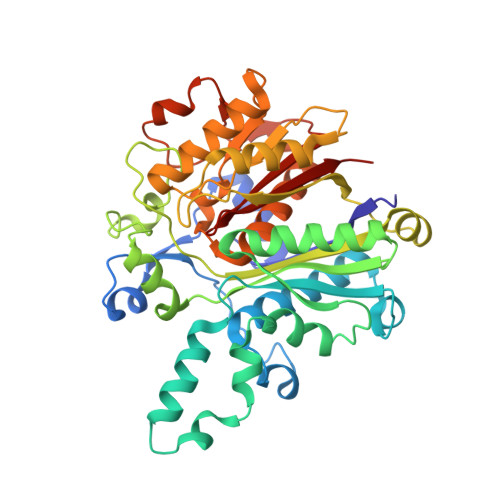Structure-Assisted Discovery of an Aminothiazole Derivative as a Lead Molecule for Inhibition of Bacterial Fatty-Acid Synthesis.
Pappenberger, G., Schulz-Gasch, T., Kusznir, E., Mueller, F., Hennig, M.(2007) Acta Crystallogr D Biol Crystallogr 63: 1208
- PubMed: 18084068
- DOI: https://doi.org/10.1107/S0907444907049852
- Primary Citation of Related Structures:
2VB7, 2VB8, 2VB9, 2VBA - PubMed Abstract:
Fatty-acid synthesis in bacteria is of great interest as a target for the discovery of antibacterial compounds. The addition of a new acetyl moiety to the growing fatty-acid chain, an essential step in this process, is catalyzed by beta-ketoacyl-ACP synthase (KAS). It is inhibited by natural antibiotics such as cerulenin and thiolactomycin; however, these lack the requirements for optimal drug development. Structure-based biophysical screening revealed a novel synthetic small molecule, 2-phenylamino-4-methyl-5-acetylthiazole, that binds to Escherichia coli KAS I with a binding constant of 25 microM as determined by fluorescence titration. A 1.35 A crystal structure of its complex with its target reveals noncovalent interactions with the active-site Cys163 and hydrophobic residues of the fatty-acid binding pocket. The active site is accessible through an open conformation of the Phe392 side chain and no conformational changes are induced at the active site upon ligand binding. This represents a novel binding mode that differs from thiolactomycin or cerulenin interaction. The structural information on the protein-ligand interaction offers strategies for further optimization of this low-molecular-weight compound.
Organizational Affiliation:
F. Hoffmann-La Roche Ltd, Pharma Research Discovery, CH-4070 Basel, Switzerland.
















